ERC Starting Grants: new record for ETH
Fifteen talented young researchers from ETH Zurich are each to receive an ERC Starting Grant, which is more than for any year previously. This will result in a total of 23 million euros in European funding for ETH.
Scientists from ETH Zurich were once again hugely successful in the latest round of the prestigious ERC Starting Grants: 3 women and 12 men each received an average of 1.5 million euros for their research projects. In total, ETH Zurich will receive 23 million euros. The selected projects cover a range of disciplines, from astronomy and mathematics to climate modelling. The researchers work in nine different ETH departments (see project details below).
Detlef Günther, Vice President for Research and Corporate Relations at ETH Zurich, is delighted that the ERC Starting Grants will enable outstanding young researchers to conduct ambitious projects at ETH Zurich. “Such a high number of successful applications once again shows the exceptional talent that we employ at our university,” says Günther. This demonstrates ETH Zurich’s enormous potential, which can be realised even more effectively with the support of the ERC Starting Grants.
“ERC grants are an outstanding funding instrument that allow our researchers to measure their projects against those of other scientists at an international level. Their most recent success shows that they easily stand up to the competition,” says Günther.
ETH researchers achieve above-average success
A total of 39 researchers submitted applications for this year’s ERC Starting Grants. Fifteen of these were approved, which equates to a success rate of 38.5%: a record high for ETH Zurich. Last year, 20% of the Starting Grant applications were successful. Another five projects also scored highly, receiving an “A” rating, but could not be financed due to insufficient funds.
In addition to the ERC Starting Grants, the European Research Council also awards Advanced Grants to successful researchers and Consolidator Grants to researchers who have achieved the first milestones in their career and are ready to form their own research group.
ETH Zurich has been very successful during the awarding of all these grants in recent years. As part of the Horizon 2020 programme from 2014 to today, ETH researchers have received more than 90 ERC grants worth a total of around 184 million euros.
The 15 projects at a glance
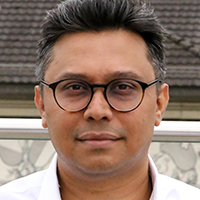
Miniature shuttles shall one day navigate through the bloodstream of the human body, controlled from outside, and deliver drugs precisely to hard-to-reach sites to treat diseases like cancer. Although microrobots already exist, they are not ready for use inside the bodies of humans or animals due to a number of limitations. Daniel Ahmed is a specialist in micro- and nanorobotics. In his ERC project, he aims to tackle these limitations and to develop small robots controlled via both ultrasound and magnetic fields and suitable for use in animal models.

Ueli Angst is a corrosion scientist and a civil engineer. In his ERC project, he studies an electrochemical technology to mitigate corrosion, with the particular focus on steel-based infrastructures. To develop the scientific basis for electrochemical corrosion protection, Angst will combine corrosion science with reactive transport modelling in porous media as well as environmental science methods. The corrosion of infrastructures, such as bridges and pipelines, causes considerable damage to society. In the EU alone, estimates of the annual costs of corroded infrastructures amount to 250 billion euros annually, with an expected increase over the coming decades.
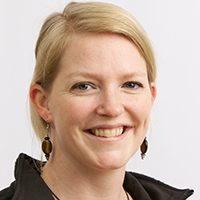
Kristy Deiner is an ecologist and conservation management scientist. In her research, she seeks to understand the cause and consequence of biodiversity loss in freshwater and terrestrial animal and plant species. Her ERC project aims to solve the challenge of monitoring biodiversity by using novel genetic technology allowing the detection of species from their DNA left behind in the environment. Species extinctions are increasing, along with the loss of the benefits provided like food or medicines. DNA from animals and plants in the environment can help determine efficiently the persistence of species and allow for better management decisions.
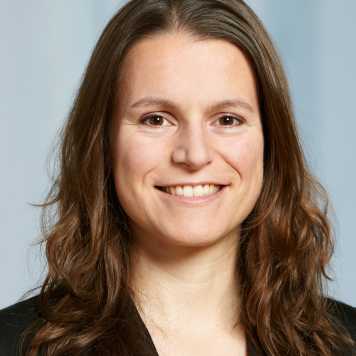
Daniela Domeisen’s research focuses on coupling processes in the climate system and their benefit for long-range predictability on timescales of weeks to months. In her ERC project, she investigates the drivers and predictability of heatwaves. While heatwaves are projected to become more severe and more frequent with climate change, models remain unable to predict their occurrence several weeks in advance. This limited predictability is due to the fact that it is currently not fully understood what drives these extreme events and how potential drivers interact, e.g. the land or ocean surface and the atmosphere. Domeisen applies a model hierarchy approach in order to extend predictable lead times through a better understanding of heatwaves.
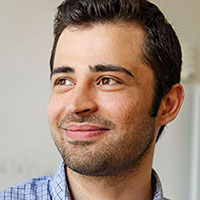
Mohsen Ghaffari works on the theoretical foundations of distributed and parallel computation. He is designing algorithms for systems in which several computers interact to solve a problem. In his ERC project, he plans to tackle some very central problems in distributed graph algorithms. For instance, the decades-old open question of whether these algorithms need randomness for their efficiency. This project also aims to develop efficient massively parallel algorithms that should enable a group of computers to collectively solve large-scale problems efficiently.

Marco Hutter is a Professor at the Institute of Robotics and Intelligent Systems. He specialises in developing quadrupedal robots, some of which can operate autonomously. In his ERC project, he aims to apply new machine learning methods to enhance the robots’ mobility and prepare them for autonomous locomotion in extremely difficult terrain. In the future, these robots could take over dirty and dangerous tasks for humans, for example in disaster areas, sewers and mines, or on offshore platforms.
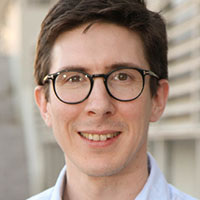
Around the world, agriculture requires large quantities of nitrogen fertiliser (ammonia) to sustain the needs of the current global population. Today, for the most part, this is produced on an industrial scale using the well-known Haber-Bosch process, which releases enormous amounts of CO2. This process alone accounts for 1 percent of the world’s CO2 emissions. Victor Mougel, an electrochemist and Professor of Inorganic Chemistry, is working on an alternative, more energy-efficient and carbon-neutral method of producing ammonia. It will be based on a new class of electrocatalysts, which Mougel intends to develop according to the functional principle of an enzyme existing in nature (nitrogenase).

Randall Platt, Professor at the Department of Biosystems Science and Engineering at ETH Zurich in Basel, focuses on creating innovative molecular tools with the goal of better understanding – and controlling – healthy and diseased cells. He recently developed a biological “data logger” to record gene expression in cells. Building on this in his ERC project, Platt plans to develop a type of sentinel cell that can be introduced into the intestine, where it will monitor and log the biochemical processes. In the future, these sentinel cells could be used in the field of medical diagnostics as living sensors.

In his project, Sebastian Schemm investigates – at the interface between weather and climate – the interaction between cloud physics and the atmospheric circulation. He wants to investigate the basic physical principles, which underly the almost chaotic nature of the atmospheric flow. In particular, his project aims at illuminating the roles of clouds, convection, radiation and turbulence in the formation of unusual atmospheric conditions. The long-term goal is to gain a better understanding of the primary drivers of rare weather conditions, extreme seasons and fluctuations in the annual cycle. Schemm also wants to formulate a new physical basis for their representation in weather and climate models.
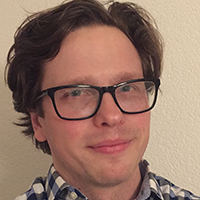
Hard water – in other words, water containing a high level of calcium or other minerals – leads to deposits in boilers and hot water pipes. Known as limescale, these deposits reduce the energy efficiency of industrial applications and may block filter membranes. Thomas Schutzius is an expert in nanoengineering and nanostructured surfaces. His ERC project will investigate the formation of limescale in detail. Moreover, he proposes to develop surfaces that prevent the deposit of calcium and other minerals by way of intelligent interaction between their material and their structure.
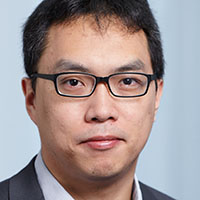
In the field of chemical engineering, Chih-Jen Shih studies the morphology, dynamics, molecular forces, and transport phenomena of nanomaterials interfaces. In his ERC project, he aims to control the movement and orientation of excitons, i.e. electrically neutral quasiparticles, in nanomaterial assemblies. His approach involves chemical processes for the development of nanomaterial surfaces that may eventually control the interactions of excitons. If this idea is successful, the efficiency of the electricity-to-light-energy conversion in modern displays and light-emitting diodes could be doubled, which would significantly reduce the energy consumption in mobile electronics.

Veerle Sterken will explore our immediate interstellar neighbourhood in her ERC project, by studying the trajectories of interstellar dust particles that move through the heliosphere. She will use computer simulations of dust trajectories together with dust impact data collected by satellites in the solar system, throughout the entire solar cycle. In particular, she aims to constrain the dust particle properties from the Local Interstellar Cloud, and to learn about the dynamic structure of the heliopshere. The results will be applied to studying how other stars interact with their surroundings, and to gain more insight into the history of the solar system on its continuous journey through our galaxy.
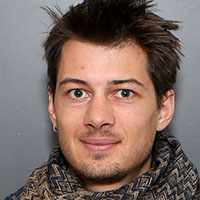
Vincent Tassion is focusing on the mathematical study of models arising in statistical mechanics. These models describe different mechanisms that give rise to phase transitions in physics. Such models include percolation processes, which are the main topic of his ERC project. Percolation theory studies how independent random input that is spread uniformly on a lattice or in space gives rise to macroscopic structures – for example in the spread of epidemics or forest fires. A number of groundbreaking results have improved the understanding of percolation. As some fundamental questions remain unanswered, Tassion aims to answer some of them by establishing new connections between percolation theory and other fields of mathematics or theoretical computer science.
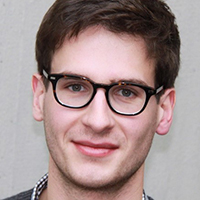
Laurent Vanbever conducts research in the area of computer networks, such as the internet or data centres, with a focus on network operations. Together with his group, he develops systems that can drive large network infrastructures while guaranteeing their availability and performance. In his ERC project, Laurent Vanbever aims to automatically synthesise provably correct network controllers out of high-level requirements. By automating the most critical aspects of network operations, the project will enable tomorrow's networks to be more dependable and, at the same time, more flexible and efficient.

Phase-change memory offers a feasible alternative to mainstream silicon-based devices. In his ERC project, Maksym Yarema will study nanodimensional phase-change materials and memory devices prepared using low-cost, material-efficient, liquid-based fabrication processes. On the materials side, he will focus on multicomponent and non-equilibrium compositions of colloidal nanoparticles and molecular inks, providing a size control for phase-change materials down to molecular level. Such colloidal nanomaterials are ideal objects to study phase transitions and high-temperature structural dynamics. On the device side, phase-change colloids are convenient building blocks of memory arrays, enabling new device configurations and energy-efficient fabrication and operation.
Benchmark for top researchers: ERC Grants
ETH researchers have been successfully applying for EU funding – ERC Research Grants – since 2007. In addition to the Advanced Grants, the European Research Council also annually awards Starting Grants to young researchers at the beginning of their careers and Consolidator Grants to successful researchers looking to establish their own group. What’s more, the large number of ERC Proofs of Concept produced by ETH Zurich (funds for drafting feasibility studies and business plans) shows that fundamental research often leads to market innovations with corresponding benefit for the entire economy. The European Research Council (ERC) is part of the EU Research and Innovation programme Horizon 2020 (2014–2020). Switzerland was readmitted as a full participant in Horizon 2020 on 1 January 2017.
Comments
No comments yet